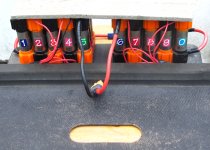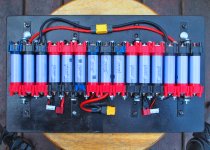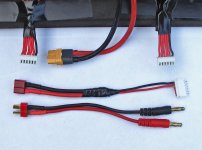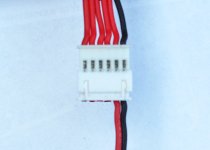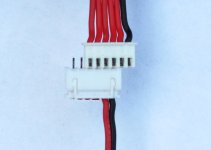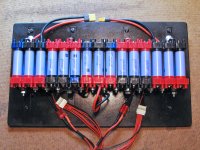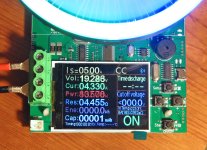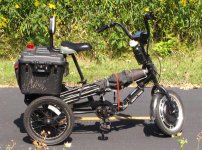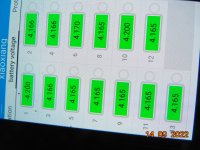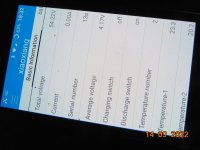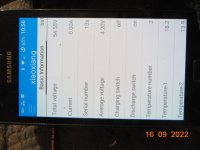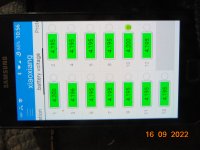m3vuv said:
Hi all,i have a homebrew 13s 10p pack with a chineese smart bms over bt,i notice cell groupe 9 never charges more than 4.108v any ideas why this is? all other groups of cells seem fine,cheers.
In the first photo 11th10p is 1mV lower than 9th10p (groupe 9). One reason for 9th10p & 11th10p having lower voltage (4.124V & 4.123V) could be that the overall capacity in those two p-groups is of enuf difference than the capacity of the other eleven p-groups.
Yes, voltage does affect cell capacity and vice versa. Two identical capacity rated cells (name brand Grade A) with one at 4.20V has more mA capacity than a sister cell at 3.30V. Likewise a cell at 3.65V has slightly less mA capacity than a sister cell at 3.75V.
When the 1st10p & 10th10p hit 4.200V your 'smart' BMS detected HighVoltageLimit and no longer permitted continued charging. Even with continued charging (with green light on) any continued balancing is at a very low/slow rate taking hours just to narrow the p-group variance by 20mV with your 13th10p.
The mean/medium average voltage variance between your eleven 10 p-groupes and two p-groupes at 4.200V after 35 hours (at a very low/slow)
balance charging rate was 0.034V (34mV). That's the best you can expect as the eleven p-groupes are already balanced at 4.165V Previously the mean/medium voltage variance between those same 11 p-groupes and two groupes at 4.200V was 0.053V (53mV).
Overall your 13th10p pack of cells just needs some occasional extra balancing with the help of some manual discharging (e.g. 1st10p & 10th10p). With the help of some manual
discharge balancing after TOP charge cycle and/or some manual
charge balancing after BOTTOM discharge cycle you could narrow the voltage variance of your thirteen 10 p-groupes to 15-20mV (or less) in no more than an hour of your time. Hopefully only bi-monthly with or without the help of some manual balancing.
Your pack isn't as bad-off as you may think (IMO). Just could use some occasional manual discharge balancing after TOP charge cycle and/or some occasional manual charge balancing after BOTTOM discharge cycle.
Using the
litokalla lii500 probably isn't worth the effort of disassembling your pack at this time to test some or all of the 130 cells. Wait until seasonal weather when ebiking isn't that enjoyable to then do some labor intrensive time consuming testing.
m3vuv said:
dont know if it matters but used bike to pop to the shops,about half a mile run then stuck it back on charge.
You really don't need to balance the thirteen 10p groupes closer than a variance than 20-30mV (IMO). You may decide to do some extended hours and hours of 'smart' BMS TOP end charge balancing bi-monthly to keep the mean/medium 13s10p voltage variance within 20-30mV.
If you add balance sensing leads to your thirteen 10p groupes it shouldn't take more than an hour to discharge the high p-groupes (e.g. 1s10p & 10s10p) and/or charge the lower p-groupes (e.g. 5s10p, 9s10p, 11s10p, 13s10p) to narrow the variance within 20-30mV). With two patch cables you could be charging a low p-groupe at the same time discharging a high p-groupe (if not beside each other). Just depends on how much of a perfectionist, your ingenuity, your patience and available time IF nothing better to do.


